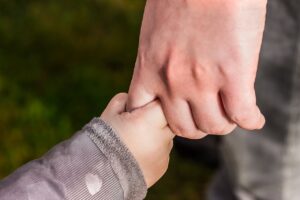What are ACEs?
ACEs are adverse childhood experiences that harm children’s developing brains and lead to changing how they respond to stress and damaging their immune systems so profoundly that the effects show up decades later. ACEs cause much of our burden of chronic disease, most mental illness, and are at the root of most violence.
“ACEs” comes from the CDC-Kaiser Adverse Childhood Experiences Study, a groundbreaking public health study that discovered that childhood trauma leads to the adult onset of chronic diseases, depression and other mental illness, violence and being a victim of violence, as well as financial and social problems. The ACE Study has published about 70 research papers since 1998. Hundreds of additional research papers based on the ACE Study have also been published.
The 10 ACEs the researchers measured:
— Physical, sexual and verbal abuse.
— Physical and emotional neglect.
— A family member who is:
- depressed or diagnosed with other mental illness;
- addicted to alcohol or another substance;
- in prison.
— Witnessing a mother being abused.
— Losing a parent to separation, divorce or other reason.
Subsequent to the ACE Study, other ACE surveys have expanded the types of ACEs to include witnessing a sibling being abused, witnessing violence outside the home, witnessing a father being abused by a mother, being bullied by a peer or adult, involvement with the foster care system, living in a war zone, living in an unsafe neighborhood, losing a family member to deportation, etc.
Why are ACEs significant?
1. The ACE Study revealed six main discoveries:
- ACEs are common…nearly two-thirds (64%) of adults have at least one.
- They cause adult onset of chronic disease, such as cancer and heart disease, as well as mental illness, violence and being a victim of violence
- ACEs don’t occur alone….if you have one, there’s an 87% chance that you have two or more.
- The more ACEs you have, the greater the risk for chronic disease, mental illness, violence and being a victim of violence. People have an ACE score of 0 to 10. Each type of trauma counts as one, no matter how many times it occurs. You can think of an ACE score as a cholesterol score for childhood trauma. For example, people with an ACE score of 4 are twice as likely to be smokers and seven times more likely to be alcoholic. Having an ACE score of 4 increases the risk of emphysema or chronic bronchitis by nearly 400 percent, and attempted suicide by 1200 percent. People with high ACE scores are more likely to be violent, to have more marriages, more broken bones, more drug prescriptions, more depression, and more autoimmune diseases. People with an ACE score of 6 or higher are at risk of their lifespan being shortened by 20 years.
- ACEs are responsible for a big chunk of workplace absenteeism, and for costs in health care, emergency response, mental health and criminal justice. So, the fifth finding from the ACE Study is that childhood adversity contributes to most of our major chronic health, mental health, economic health and social health issues.
- On a population level, it doesn’t matter which four ACEs a person has; the harmful consequences are the same. The brain cannot distinguish one type of toxic stress from another; it’s all toxic stress, with the same impact.
What’s particularly startling is that the 17,000 ACE Study participants were mostly white, middle- and upper-middle class, college-educated, and all had jobs and great health care (they were all members of Kaiser Permanente).
What’s the neurobiology of toxic stress?
Brain science shows that, in the absence of protective factors, toxic stress damages children’s developing brains. Stress is the body’s normal response to challenging events or environments. Positive stress — the first day of school, a big exam, a sports challenge — is part of growing up, and parents or caregivers help children prepare for and learn how to handle positive stress, which is moderate and doesn’t last long. It increases heart rate and the amount of stress hormones in the body, but they return to normal levels quickly.
But when events or the environment are threatening or harmful – we stumble across a bear in the woods – our brains instantly zap into fight, flight or freeze mode and bypass our thinking brains, which can be way too analytical to save us (Is the bear really mean? Is it more interested in berries or killing me? Should I wait until I see it charge?). With help from caring adults, children also recover from this tolerable stress.
Too much stress – toxic stress – occurs when that raging bear comes home from the bar every night, says pediatrician Nadine Burke Harris. Then a child’s brain and body will produce an overload of stress hormones — such as cortisol and adrenaline — that harm the function and structure of the brain. This can be particularly devastating in children, whose brains are developing at a galloping pace from before they are born to age three. Toxic stress is the kind of stress that can come in response to living for months or years with a screaming alcoholic father, a severely depressed and neglectful mother or a parent who takes out life’s frustrations by whipping a belt across a child’s body.
For full article and resources, click HERE


